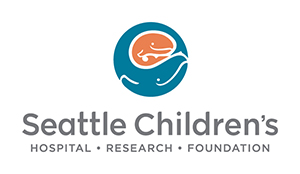
Attention Deficit Hyperactivity Disorder (ADHD) is one of the most common neurodevelopmental disorders that affect children. While patients may first be diagnosed in childhood, ADHD often persists and can be diagnosed at any age. Management of the condition varies as symptoms manifest differently through various milestones in a person’s life.
Common ADHD symptoms include trouble focusing and completing tasks, hyperactivity and impulsivity that affect school, family and social relationships. Many individuals with ADHD have poor organizational and time-management skills, as well as difficulty regulating emotions. Context is important. While everyone may experience these symptoms to some extent, ADHD is considered when they are more frequent and severe than same age-peers in similar environments, and not due to another disorder or condition.
Dr. Mark Stein, director of Seattle Children’s Program to Enhance Attention, Regulation and Learning (PEARL) and a researcher with Seattle Children’s Research Institute’s Center for Child Health, Behavior and Development (CCHBD), has dedicated his career to improving treatments and outcomes for children diagnosed with ADHD. His team studies how ADHD runs in families and tailors therapies through individualized evaluations and evidence-based treatment plans.
This excerpted post was originally published on the Seattle Children’s On the Pulse blog.

On the Pulse sat down with Dr. Stein to learn more about his research and how families struggle with this often overlooked, but common, condition.
How is ADHD typically diagnosed in children?
There is no specific test for ADHD. Typically, children are diagnosed by a health care provider who gathers information about current functioning; their developmental, medical and family history; and also assesses for other problems or conditions. ADHD is considered when someone has persistent and developmentally inappropriate symptoms of attention, hyperactivity or impulsivity that are causing problems either at school or at home.
Other factors, such as big life changes like switching schools, the child’s age or other challenges like a hearing impairment, can cause similar behavioral symptoms to ADHD. If parents are concerned, we recommend families seek guidance from their pediatrician who knows their child and can help rule out medical contributors, screen for ADHD and other disorders, and refer if a subspecialist is warranted.
What are some challenges in diagnosing children with ADHD?
It’s more difficult to diagnose in children under 6, when ADHD symptoms are often unstable, and in teenagers who often have other challenges that may overlap with general ADHD symptoms. School aged children between these two groups often respond the best to treatment, and hopefully later problems can be prevented or reduced by proactive recognition and treatment.
We started Seattle Children’s PEARL for ADHD as a resource for pediatricians to refer complex cases. We partner with pediatricians to provide evaluations to inform individualized treatment plans. ADHD is very common and varies widely in how it presents, but a good evaluation targets treatment that may include recommendations for the child, their parent and for the teacher or school. Through a collaborative care model, we hope that more youth can receive evidence-based and individualized treatments to address the strengths and challenges each child faces.
What are some common methods used to treat pediatric patients with ADHD?
ADHD is one of the most thoroughly researched disorders with safe and effective treatments. For many children with ADHD, stimulant or non-stimulant medications are recommended in combination with behavioral interventions such as: parent and teacher training, accommodations or individualized educational programs, and keeping up good nutrition and sleep hygiene.
For young children and those with relatively mild symptoms, behavioral interventions that are reward-based are recommended first. Behavioral programs utilize rewarding behaviors to increase skills, improve communication and reduce family conflicts.
Improving sleep and physical activity are helpful first steps for all children to help improve mood, alertness and attention. However, research shows healthy habits alone aren’t enough to manage ADHD symptoms.
ADHD is not a disorder that requires lifelong medication like epilepsy or diabetes. ADHD is more like asthma, where medication sometimes plays a role but for many, symptoms improve with age. Nonetheless, untreated ADHD is not a harmless condition. ADHD can increase later risk for a range of psychiatric and medical disorders, such as depression, suicide, substance abuse and obesity.
It is important to note that ADHD is treatable, treatment changes over time and proper management can help prevent or lessen the risks of unmanaged ADHD.
How do you think modern-day factors like screen time affect children with ADHD?
It used to be the most common behavioral problems at home were not doing homework and not listening. While still concerns, by far the most common complaint I hear now is, “I’m having trouble getting my child to come off their screens!”
Too much screen time can really interfere with learning and reinforce many bad habits. It can be challenging for parents to moderate screen time themselves; many could benefit from learning what their child also needs to learn about media use. While I don’t think technology use causes ADHD, many families struggle with it and could benefit from interventions such as a tailored media plan for both the parent and the child.
How can parents get involved with supporting their child with ADHD?
Parents should be in close communication with their child’s teachers and the parents of their child’s friends. Structure and communication are helpful to youth with ADHD. Regularly going over rules as a family, such as the prescribed media plan, chores and planned recreational and athletic activities are often helpful.
Additionally, whenever possible, emphasize your child’s strengths. When designing a treatment program, we look for what they are good at and how the program can really increase that strength. Rewarding successful behaviors leaves lasting impacts on self-esteem and can empower them to not only manage their symptoms in a healthy way but also to make good choices.
Parenting a child with ADHD can be difficult and at times exhausting. Finding support and practicing self-care is recommended for all parents, but especially parents of a child with ADHD.
Can you tell us a little bit more about your research?
We have a few studies going on at the Stein Lab. One of our biggest projects is the TPAC study, which is for parents who may have ADHD themselves and may not be aware or currently treated. ADHD often runs in families. We found about 30% of parents of children with ADHD show similar symptoms. We are looking at how to best treat ADHD in these families. For example, we are exploring if we should treat parents first through parent training coupled with or without ADHD medication instead of medicating the child initially.
We are also researching the effects of a new treatment for ADHD, trigeminal nerve stimulation (TNS). This treatment occurs at night, does not involve medication and is non-invasive. The team is working to better understand for whom this therapy would be most effective.
Additionally, we hope to have more treatments for different age groups, including adolescents, that utilize shared decision-making to encourage their participation in treatment. This practice involves everyone – the provider, parent and patient – in the development and evaluation of a treatment plan to help encourage ongoing buy-in.









